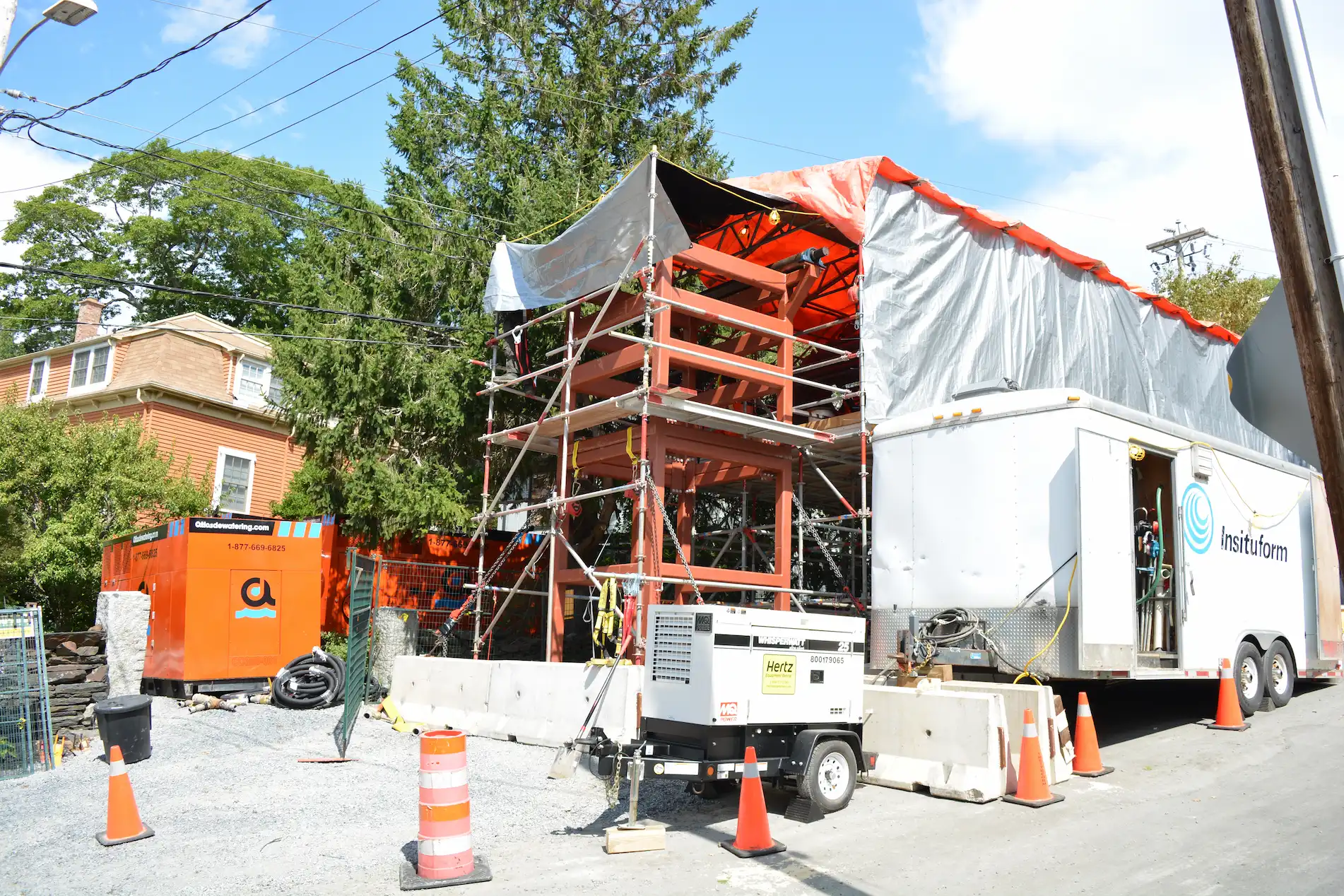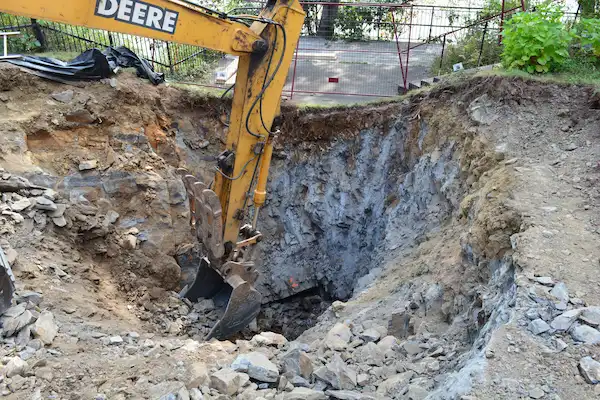Project Description
Robinson Consultants Inc. was retained by Halifax Water to complete the CIPP rehabilitation of 4km of 1200mm round and 1200mm x 1500mm arch sewer as part of the Northwest Arm Trunk Sewer (NATS) Rehabilitation project. The NATS has two lift stations along its length, one intermediate lift station, and one at the low end where the rehabilitation finishes. The ambitious goals of this project presented several significant challenges including extremely limited access, accelerated completion schedule, and complex engineering design of CIPP in an arch shaped pipe structure. Robinson Consultants Inc. completed the project on time and within the budget.
The project was Clean Water and Wastewater Fund (CWWF) funded with an aggressive timeline for completion proposed. A typical project of this size and magnitude would traditionally take over 12 months of planning and engineering design to successfully deliver. The Robinson Consultants Inc. project team was able to successfully complete all planning, condition assessment and engineering design and RFP tendering requirements in seven months to meet the CWWF funding requirements. Significant experience was gained on the extended capabilities of CIPP in non-traditional applications through carful engineering review of conditions and understanding of CIPP materials.

This project is widely considered the most complicated CIPP project completed in Canada and one of the most challenging CIPP projects completed in North America, setting a record for the longest CIPP installation in Canada at 682m.
Engineering Innovation
The design of the CIPP liner required a unique design since CIPP design standards (ASTM F1216) are founded on the basis that the sewer being rehabilitated is circular in shape and is not applicable for non-circular sewers. As a result, the project required the use of a unique design approach, including development of a specialized non-circular design calculation for the arch shaped portions of the sewer. The design approach assessed the pipe in three distinct components, the arch top, the vertical sides, and the dished bottom. The design parameters for each of these individual components were established, along with design equations to identify the CIPP thickness required to meet the expected loads.
Coordination with Stakeholders
 The NATS project involved significant co-ordination efforts with several agencies including CN, local municipalities, Parks Canada, and private property owners, as the work was predominantly completed on private property. This was accomplished through a comprehensive communication plan and multi modal communications (e.g., web site, community meetings, individual property owner meetings, etc.). The project further required multi disciplines to be involved, including coastal engineers (tidal impacts on pipe), mechanical engineers (PS retro fit), civil engineers for construction of access maintenance holes, CCTV contractor, etc. This required sound co-ordination in order to complete the project engineering in a very short time period.
The NATS project involved significant co-ordination efforts with several agencies including CN, local municipalities, Parks Canada, and private property owners, as the work was predominantly completed on private property. This was accomplished through a comprehensive communication plan and multi modal communications (e.g., web site, community meetings, individual property owner meetings, etc.). The project further required multi disciplines to be involved, including coastal engineers (tidal impacts on pipe), mechanical engineers (PS retro fit), civil engineers for construction of access maintenance holes, CCTV contractor, etc. This required sound co-ordination in order to complete the project engineering in a very short time period.
Located on the coast of the Northwest Arm body of water, the NATS alignment meanders along the shoreline and ranges in distances of anywhere from 0-10 meters from the water’s edge. The 4.7km shoreline that the sewer runs parallel to has a variety of difficult to access terrain including multimillion dollar residences, steep shoreline slopes, limited access due to load bearing bridges (only minor loads permitted), CN Rail track crossings, hydro permits, etc. Robinson Consultants Inc. completed a feasibility study which included review of permit requirements and consultation with numerous agencies/stakeholders including CN Rail, Nova Scotia Hydro, Parks Canada, Halifax Municipality, Halifax Harbour Port Authority, and Nova Scotia Environmental.
Robinson Consultants Inc. corresponded with the public regarding the bypass installations or potential service disruption that might occur. Phase 1 of the project also involved a review of access constraints along the project limits and the initiation of required permit applications. Robinson Consultants Inc. communicated with over a hundred property owners along the project easement. The communications were conducted through two public meetings, mail notices, conference calls, and on-site visits. Also, an ‘Underground Overhaul’ page was built on Halifax Water’s website that gave residents timely updates on the project, with signs posted along the project route and QR codes linking to the website. Communication in every practical way was undertaken to express the project need and benefits of the rehabilitation technology method. This resulted in significant public support with only minor issues raised during construction, in fact, some owners where very helpful in executing the work.
CN Rail engagement was required to address the load restricted bridges which need to be crossed to transport materials and equipment to site. Significant co-ordination with CN Rail produced new structural load assessments for each bridge (five total) to determine the exact safe load limits which could be transported across. These limits where used in the constructability assessment and described in the RFP for contractors. This result in a construable solution being implemented which observed the require bridge load limits.
Parks Canada was engaged due to the final installation location requiring transportation of equipment and materials through Federal Park land (Point Pleasant Park). This included the assessment of the interior park roads to determine if the required trucks could safely travel on the roads. In addition, a tree trimming plan was developed along the interior roads to allow for the truck movement without damaging vegetation. This engagement allowed for very large truck movement through the park without any significant disruption to vegetation or the public’s use of the park.


